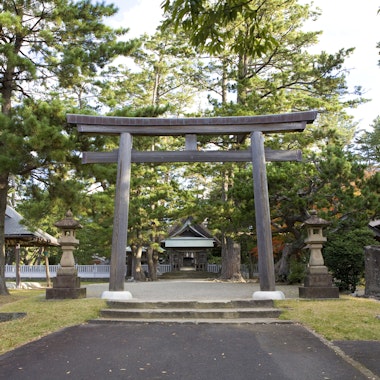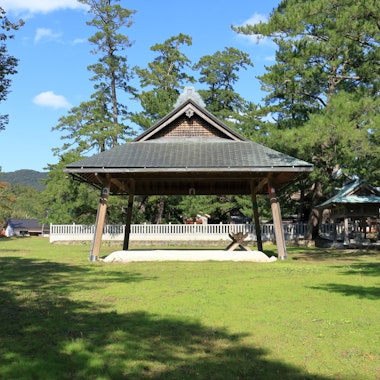


Mizuwakasu Shrine stands as the highest ranked shrine of the former Oki Province, located in the Goka area of Dogo Island, the largest of the Oki Islands in Shimane Prefecture. The shrine is recorded in the Engishiki, a historical text compiled in 927, and enshrines Mizuwakasu-no-mikoto, the deity of land development in Oki Province and guardian of the Sea of Japan. According to legend, the shrine was established during the reign of Emperor Suijin or Emperor Nintoku in the Kofun period (approximately 250-538), though some theories suggest it dates back even earlier.
The shrine's main hall, constructed in 1795, exemplifies the unique Oki-zukuri architectural style. This distinctive design combines elements from three of Japan's most revered shrines: the front resembles Yuiitsu Shinmei-zukuri style from Ise Grand Shrine, the roof follows Taisha-zukuri style from Izumo Grand Shrine, and the pent roof adopts Kasuga-zukuri style from Kasuga Grand Shrine. The building is designated as an Important Cultural Property by the Japanese government. The shrine grounds feature a well-maintained sumo ring, reflecting the strong tradition of sumo wrestling in the Oki Islands.
Visitors can experience the Sairei Furyu Festival, held every even-numbered year on May 3, which ranks as one of the three great festivals of the Oki Islands. The festival features kagura dancing, lion dancing, and yabusame (horseback archery). Adjacent to the shrine stands the Oki Kyodokan local history museum, housed in a former Shimane Prefecture office building. Behind the museum, visitors can explore a 150-year-old thatched farmhouse with exhibits covering the islands' history and folklore. The shrine office on the right side of the grounds provides goshuin red seal stamps for visitors.
The shrine is located approximately 13 kilometers north of Saigo Port along the main island road. From Saigo Port, visitors can reach the shrine by car in 25 minutes or by bus in 30 minutes, alighting at the Mizuwakasu-jinja-mae bus stop, followed by a 5-minute walk. Bus service is limited, so checking schedules in advance is recommended. There is no admission fee to enter the shrine grounds.